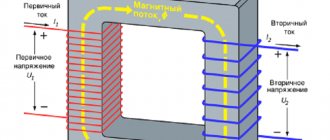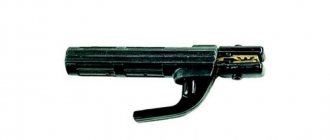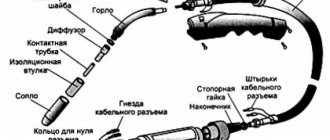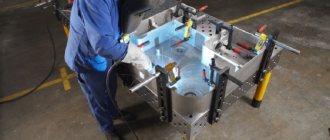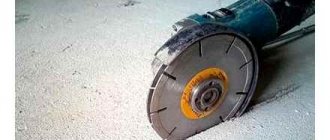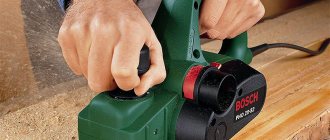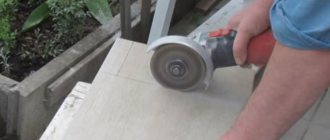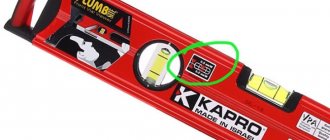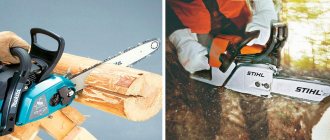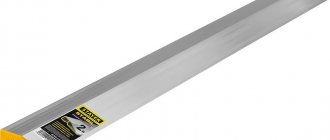Main types of cables
It is necessary to select a cable taking into account the parameters of the welding machine. The most important thing in it is the current strength: at 189A it is better to give preference to wire of the KG 1x16 brand. In addition, you need to understand the purpose of the equipment. Often, some options have a high cost, so you should immediately decide which cable is most suitable for a particular device.
Single-core
Consists of elastic and flexible copper wire, which is an excellent conductor of electric current. In most cases, copper cables for small inverter devices. As a rule, they are portable and have little power.
Twin-core
The cable consists of copper wire and has a cathode and an anode. Sometimes you can find a wire made of copper mixed with other metals that are characterized by good conductivity of electric current. Suitable for pulse welding.
Three-core
More professional cable required for automatic equipment in production. It is used in various factories where there is a large volume of work or where a perfect weld is required.
Choosing wires for a welding machine is not so difficult, because they are marked. Using the following tips you can quickly find the right one:
- • KS - the wire is suitable for any welding work;
- • P - the cable is covered with a polymer layer to protect the current-carrying core (often there is a digital designation next to the letter indicating the number of cores);
- • HF - the product is suitable for high frequency voltage.
Is it permissible to extend the welding cable?
Often, when working in cramped conditions or at heights, it is very difficult to move the machine itself behind the welder. It will be much easier to change the cable for the welding machine to a longer one. But this simple solution has its own nuances.
None of the manufacturers officially speak out in the documentation for their equipment about the permissibility of extension or its prohibition. Among the welders themselves, there is often a belief that extension is inadmissible due to the increased risks when working with such a device and the likely loss of manufacturer’s warranties in the event of breakdowns.
In reality, the length of the cable for a welding machine is not only possible, but also needs to be increased if operating conditions require it. The main thing to remember is that when extending it by one meter, its thickness must be increased by 40-50%.
If this is not done, then the resistance will become unacceptably high and it will begin to heat up uncontrollably, while the welding arc will shorten and will be poorly controlled even by an experienced welder. An attempt to level out current losses by increasing it as much as possible will result in the welding machine operating in overload mode. It will quickly begin to wear out and fail.
When extending the cable, you need to use standard connecting elements - plugs and terminals. Only they can ensure the proper level of safety and quality of work. They are connected to the cable itself by soldering or pressing. In both cases, the connection points are reliably isolated
When doing extensions, be sure to check the current load table provided!
KPGU cable
The KPGU cable is used to connect to standard industrial power supply networks of mobile machines, instruments, and mechanisms for various purposes.
Features improved bending characteristics. Designed for operation in areas with temperate climates, can be used on land and water bodies. Order
Plus, each of the cables has different characteristics. One of them is resistance to aggressive external factors and the ability to withstand temperatures from -50°C to +50°C. There are tropical (KG-T) and cold-resistant ( KG-HL ). The first option is intended for work in hot climates with high humidity, and the second - for cold areas with frosts down to -60°C.
Almost all inverters are sold with a wire included, but it doesn’t hurt to purchase a spare one separately. You should choose the same product, taking into account the labeling and recommendations in the instructions.
Welding cable, types, markings
There are a large number of different cables on the modern market. The main classification involves dividing conductors into groups depending on the number of cores:
- wires with one copper core are used to equip portable welding machines when performing electric arc welding;
- cords with two cores made of copper or its alloys represent an anode and a cathode, which allows them to be used for pulse welding and for cutting metals;
- three-core ones are designed for automatic welding and for obtaining a jet seam.
These conductors are marked with the following set of letters and numbers: KS (welding cable) – 1-3 (number of cores). The marking may also contain the following designations: P – polymer protection; HF (P, P) – high-frequency current of alternating or direct type.
Next we will look at cable brands from the first group.
KRPT
KRPT is a brand of welding cable for manual arc welding, the abbreviation includes the following designations:
K – cable; R – rubber insulation and shell; P – portable type; T – heavy.
KRPT is a flexible conductor with copper conductors, used for work both indoors and outdoors.
This brand of cable for a welding machine is used for connecting mobile and portable mechanisms to networks with alternating voltage up to 660 V with a frequency of up to 400 Hz or with direct voltage up to 1000 V.
Digital marking includes the number of cores and their cross-sectional area; a question mark – “?” is used as a separating symbol. The marking can have a multi-link form: the wire includes conductors with different cross-sections or one of them is used for grounding.
Important! KRPT is an obsolete brand of conductors, so it has been discontinued. KG acts as an analogue.
KG
KG (flexible cable) is the most popular brand of welding cable, designed for connection to alternating voltage networks up to 660 V with a frequency of 400 Hz or direct voltage up to 1000 V.
Experts identify the following types of CG, which are intended for use in different climatic conditions:
KG-HL – cold-resistant, used in very low temperatures – down to -60°C;
KG-T – tropical, designed to perform work at high temperatures – up to +55°C;
KGn - the wire has non-flammable insulation, recommended for welding in fire hazardous conditions.
KG-KOG is the most flexible type of wire; it should be used for work in hard-to-reach places, indoors, and when erecting metal structures at height.
KG cables differ in the maximum current load they can withstand. The magnitude of the current, in turn, depends on the cross-sectional area of the wire. The main types of CG are presented in the article “Welding cable CG”.
COG
Another popular brand is KOG - a particularly flexible cable designed for work in hard-to-reach places.
The high flexibility of the wire guarantees a quick change in the position of the welding equipment, which ensures comfort for the performer.
KOG conductors are intended for connecting electrode holders during arc welding, automatic or semi-automatic installations with a source of alternating voltage 220 V, frequency 50 Hz or direct voltage 700 V.
KOG is an analogue of KG and has some design features. Marking of the KOG welding cable and its varieties:
- KOG-T has the following operating temperature range: from -30 to +50°C;
- KOG-U – from -50 to +50°С;
- KOG-HL – from -60 to +50°С.
Other important information is presented in the article “KOG Welding Cable”.
General safety requirements
Working with high voltage puts forward certain safety rules. Cables for welding must meet strict requirements and standards. The main ones:
- • the cross-sectional area of the core must be such as to withstand the electrical load;
- • braiding with polymer materials is required to prevent damage to the rubber flexible cable by environmental factors.
In addition, the braid should be quite soft, but elastic. In addition to cold, heat, and humidity, products are subject to repeated twisting.
Requirements
The welding cable must pass the operating welding current with minimal losses. Of the available materials, copper has the highest conductivity. So that the wire itself does not heat up, that is, there is no noticeable voltage drop on it, it must be thick enough (large cross-section).
The structures being welded have a complex shape, and welding has to be done in different positions. The electrode must freely reach any place in the structure being welded. Therefore, the welding wire must have maximum flexibility and not interfere with the work.
Since there are often metal conductive structures around the parts being welded, the wire must have reliable insulation. In addition, the insulation must allow cooking in difficult natural and industrial conditions.
It must withstand exposure to heat, cold, spilled oil or other lubricants. The conductor and insulation must be resistant to shock, jerking and chemically aggressive environments.
Since during operation the welding wire has to be wound and wrapped many times, it must withstand this. These requirements are met by large cross-section stranded copper wire in a soft, oil-resistant rubber sheath.
Proper use of the cable
Safety regulations place demands not only on the characteristics of the wires, but also on their use. The product must be connected and used in the following sequence:
- • the wire must be connected to the welding machine exclusively through special connectors and lugs;
- • to connect cables to each other, crimping is used, and the connections are also insulated;
- • when connecting the power cable through the holders, remember the polarity, which is prohibited from changing;
- • Do not pull the wires too hard or use them for any other purpose.
The most important rule is to always choose a cable that fully complies with all necessary standards. It must be in good working order and without visible damage.
Safety requirements
Like any other device designed to work with electricity, welding wires are subject to strict requirements and mandatory high safety standards.
The main safety requirements can be divided as follows:
- The cross-section of the core must be able to withstand the required electrical load, that is, the cross-sectional area must be adequate.
- The body of the wire must withstand mechanical stress, as well as the influence of an aggressive chemical environment. These conditions are met using the correct braid made of polymer materials.
- Usually the wires are twisted many times. This fact should not affect the integrity of the braid - it should be elastic and resilient.
Can the cable be extended?
There is no exact answer to the question that concerns many people from manufacturers. Professionals say that the wires cannot be extended, otherwise the voltage will decrease and the quality of work will deteriorate. However, it is still permissible to do this if required. The voltage can actually become less, which always affects the welding result. In any case, it is better to immediately buy a cord of the required length to avoid problems.
Welding cable length
To avoid any trouble with the inspector, when extending the welding wire, it should be taken into account that, according to fire safety rules, it should not exceed 40 m in length. Officially, lengthening the wires is not prohibited, however, along with it, the resistance of the wire increases, to overcome which you need to configure the device for maximum loads. This mode of operation quickly wears out the equipment.
To ensure that the resistance value of the cores remains unchanged, the cross-section is increased. When lengthening the wire by 2 times, the cross-section will also have to be doubled. At the maximum length of the welding cable, taking into account the increase in cross-sectional area, its weight may become greater than that of the inverter. For welding small metal structures, 5 - 10 m is enough. If this is not enough, the device is connected to the mains via an extension cord.
Welding cables are connected to each other in several ways:
- Twists are easy to perform and quite reliable, but extending wires in this way is prohibited by the rules for installing electrical installations. The exception is when they are incorporated into other connection technologies. However, the ban does not prevent many welders from using them. For reliable contact, the ends of the wires, cleared of insulation, are treated with a solvent and then sandpaper before twisting.
- A male-female connector is convenient for quickly extending cores to the desired length from several parts. The stores have a large selection of designs and sections.
- Small cross-sectional conductors are connected by hot soldering. Their ends are cleaned to a shine, tinned, twisted, and crimped with pliers. To protect against oxidation, rosin or flux is applied to the surface. Depending on the cross-section, the twist is heated with a soldering iron or torch. Solder is added to the burner flame or on the soldering iron tip, filling the gaps between the wires. After cooling, the remaining flux is washed off.
- Crimping is performed using sleeves made of the same material as the cable (copper or aluminum). They are put on twists and crimped with pliers.
- A reliable connection is made by contact, gas, thermite welding. In the first case, the cores are fused after heating with an arc created by a carbon electrode. Gas welding is used to connect only solid aluminum conductors with a cross-section of no more than 20 mm². Thermite welding requires special cartridges.
Welding cable selection
Undoubtedly, the main requirement for a product is uninterrupted operation. This can be affected not only by the quality of the wire, but also by the mains voltage, as well as the welding machine itself. You need to pay attention to the length, material and layers of braiding, as well as the cross-sectional area of the cable. Wires designated with the letters KG (flexible braid) or KOG (very flexible braid) are extremely popular. The length is usually 2-3 meters, since longer products lead to heating of the cable due to an increase in cross-sectional area.
Welding wires are expensive, but at the same time they meet the necessary characteristics. It is not advisable to save on them, otherwise short circuits or poor quality of work cannot be avoided.
Welding cable brands and their characteristics
First of all, it should be understood that the welding cable experiences loads not only from the inverter, but also from external conditions. Friction against the surface (including asphalt, concrete, etc.), high and low temperatures, falling objects are common and inevitable unfavorable factors. Therefore, when choosing a cable, it is necessary to take into account the operating parameters of the equipment and its operating conditions. First you need to decide what cables exist and how they differ.
Flexible welding cable KG
One of the most common cable brands. It is explained very simply - the cable is flexible. It performed well in working with direct current up to 1000V or alternating current up to 600V and frequency up to 400 Hz. The wire is intended for switching welding equipment to a 220 or 380 volt network, connecting to ground or a holder.
Welding wire KOG1
This cable differs from its previous analogue in having a smaller core diameter. Because of this, it is more flexible and has a smaller turning radius. This feature is in demand for working in hard-to-reach places or in cases where you need to bring the electrode at an unusual angle—too sharp or, conversely, too wide. Also, a flexible cable is practical during work at heights, during ceiling welding, when a specialist wraps the cord around his hand to make it easier to hold. The wiring is designed to operate from a 220 volt network with a current frequency of 50 Hz.
KGN
The letter “H” in the abbreviation conveys information that the insulating sheath of the cable is non-flammable. It is made of a special material with increased heat resistance and can withstand temperatures over 200 degrees Celsius. This conductor can be used even in fire conditions, when electrical welding work is urgently required.
Withstanding extreme temperature conditions, the cable is in demand by teams of the Ministry of Emergency Situations, fire brigades, repairmen on sea vessels, etc. In industry and everyday life, the wire is in demand when working on large objects, when the welder has to lay a power supply line through newly welded sections of metal. Insulation does not melt when in contact with hot metal.
Welding cable KG-HL
The “HL” index indicates that the cable tolerates cold well. It contains a special rubber that reduces the likelihood of insulation cracking in the cold when bent. It remains quite flexible even at temperatures of -60 degrees Celsius. Therefore, it is in demand by specialists working in the Far North. Therefore, practitioners who often have to work in the cold should pay attention to this product.
CPEC
In the cable, instead of the central core, a spiral-shaped tube is installed. This design is capable of passing a wire inside, which will close the circuit and initiate an electric arc. The wire can be either solid or hollow with flux inside. The cable is intended for semi-automatic welding, and its price depends on the diameter. Due to the features of the device, in particular, due to the hollow design, the cable does not last long - approximately 1.5 years. Can operate at temperatures down to -10 degrees Celsius and is designed to carry 42/48 volt AC or DC electrical current.
